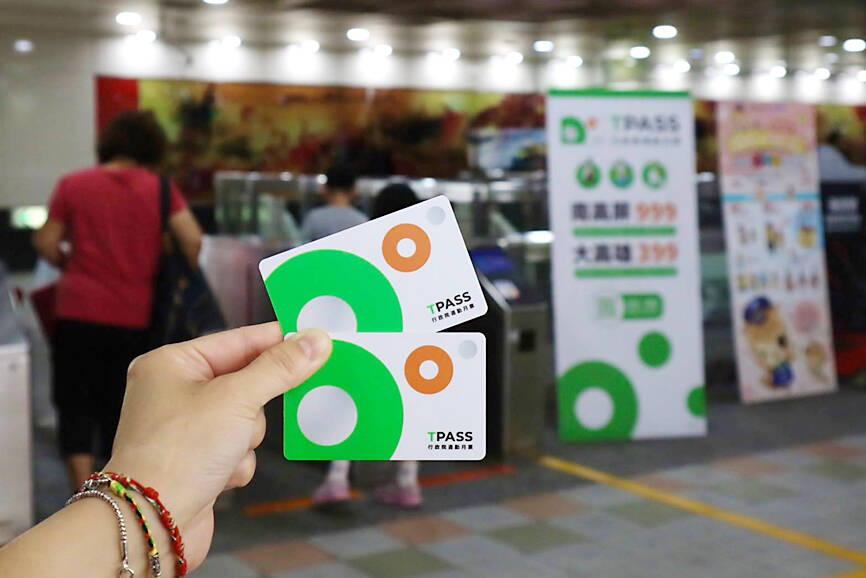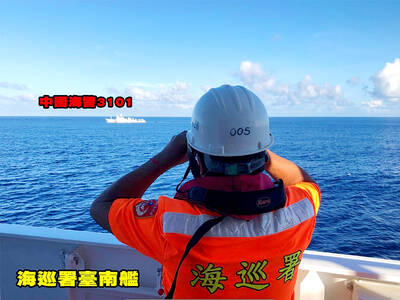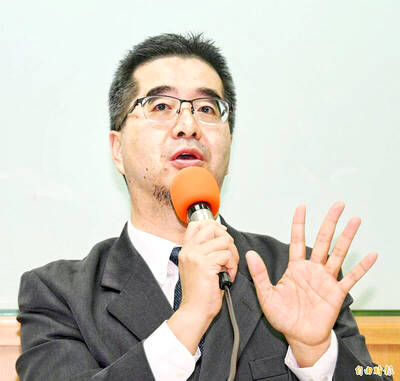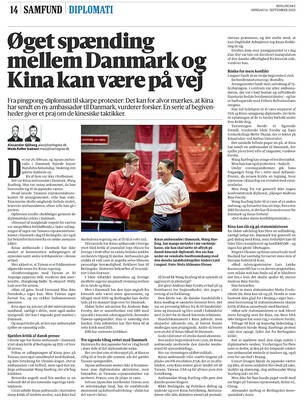Frequent public transport users would receive monthly rewards if they join the government’s TPASS 2.0 program next year, Minister of Transportation and Communications Chen Shih-kai (陳世凱) told reporters at a luncheon in Taipei yesterday.
The TPASS 1.0 program was implemented in July last year in northern, central and southern Taiwan as part of the Executive Yuan’s plan to boost the use of public transport systems throughout the nation.
Aside from the TPASS, part of the funding was also used to support regional passes issued by cities and counties.

Photo: Ge You-hao, Taipei Times
The nation has so far about 700,000 active users, ministry data showed.
“Most TPASS users are daily commuters, because it is a relatively better deal for them. However, we want to expand the number of users by including people who do not need to access a public transport system daily, but are nevertheless frequent users, such as people who need to access public transport more than 11 times per month,” Chen said.
More details about TPASS 2.0 are to be unveiled on Jan. 14 and Chen said that people would be able to begin registering as members of the scheme on that day and start accumulating trips from Feb. 1, adding that the first ridership reward would become available on March 25.
An additional 10 percent monthly reward would be given to those joining the TPASS 2.0 before the end of next year, he said.
Current TPASS users can also join the frequent user program, Chen said, adding that rules of the program would be consistent nationwide.
Local governments are also expected to offer more regional passes next year, he said.
The TPASS 2.0 program would not conflict with Taiwan Railway Corp’s (TRC) planned ticket price increases, he said.
“TRC ticket prices have not been raised for nearly 30 years. In certain railway sections, a TRC ticket is even cheaper than the bus or MRT. Sustainable operations are key to determining if the railway operator can exist for another 100 years. We hope that the public can engage in a more practical discussion on TRC ticket prices,” Chen said.
The ministry would resume discussion of the issue after the Lunar New Year holiday, he said.
Earlier this year, Chen had pledged not to raise TRC ticket prices before the nation’s most important holiday.
While many think that TRC should address its safety problems before raising ticket prices, Chen said that both issues need to proceed simultaneously.
“TRC has been working hard to improve its service quality, considering that its railway system is more complicated than that of Taiwan High Speed Rail Corp,” Chen said. “Safety and quality services should remain TRC’s priority, but revenue is also important in maintaining normal operations.”
Meanwhile, Chen said that the vision of building a nationwide high-speed rail system remains possible to achieve, including extensions to Pingtung and Yilan counties.
“When the first MRT Line was constructed in Taipei in 1988, nobody could imagine that it would be expanded into the MRT network it is today,” Chen said. “The problems of constructing a nationwide high-speed rail system, such as unstable ecological conditions caused by a magnitude 7.2 earthquake on April 3, might be overcome as the technology develops in the next 20 to 30 years,” he said.

The Coast Guard Administration (CGA) yesterday said it had deployed patrol vessels to expel a China Coast Guard ship and a Chinese fishing boat near Pratas Island (Dongsha Island, 東沙群島) in the South China Sea. The China Coast Guard vessel was 28 nautical miles (52km) northeast of Pratas at 6:15am on Thursday, approaching the island’s restricted waters, which extend 24 nautical miles from its shoreline, the CGA’s Dongsha-Nansha Branch said in a statement. The Tainan, a 2,000-tonne cutter, was deployed by the CGA to shadow the Chinese ship, which left the area at 2:39pm on Friday, the statement said. At 6:31pm on Friday,

The Chinese People’s Liberation Army Navy’s (PLAN) third aircraft carrier, the Fujian, would pose a steep challenge to Taiwan’s ability to defend itself against a full-scale invasion, a defense expert said yesterday. Institute of National Defense and Security Research analyst Chieh Chung (揭仲) made the comment hours after the PLAN confirmed the carrier recently passed through the Taiwan Strait to conduct “scientific research tests and training missions” in the South China Sea. China has two carriers in operation — the Liaoning and the Shandong — with the Fujian undergoing sea trials. Although the PLAN needs time to train the Fujian’s air wing and

The American Institute in Taiwan (AIT) put Taiwan in danger, Ma Ying-jeou Foundation director Hsiao Hsu-tsen (蕭旭岑) said yesterday, hours after the de facto US embassy said that Beijing had misinterpreted World War II-era documents to isolate Taiwan. The AIT’s comments harmed the Republic of China’s (ROC) national interests and contradicted a part of the “six assurances” stipulating that the US would not change its official position on Taiwan’s sovereignty, Hsiao said. The “six assurances,” which were given by then-US president Ronald Reagan to Taiwan in 1982, say that Washington would not set a date for ending arm sales to Taiwan, consult

A Taiwanese academic yesterday said that Chinese Ambassador to Denmark Wang Xuefeng (王雪峰) disrespected Denmark and Japan when he earlier this year allegedly asked Japan’s embassy to make Taiwan’s representatives leave an event in Copenhagen. The Danish-language Berlingske on Sunday reported the incident in an article with the headline “The emperor’s birthday ended in drama in Copenhagen: More conflict may be on the way between Denmark and China.” It said that on Feb. 26, the Japanese embassy in Denmark held an event for Japanese Emperor Naruhito’s birthday, with about 200 guests in attendance, including representatives from Taiwan. After addressing the Japanese hosts, Wang